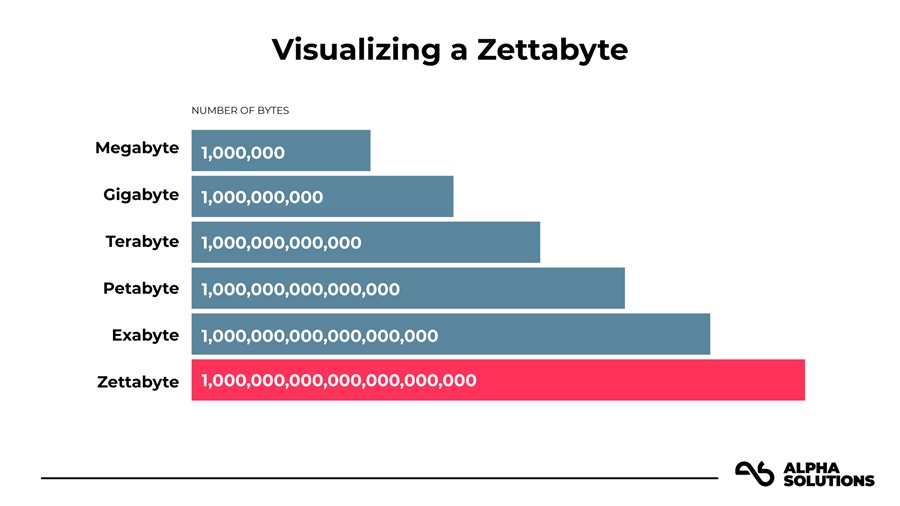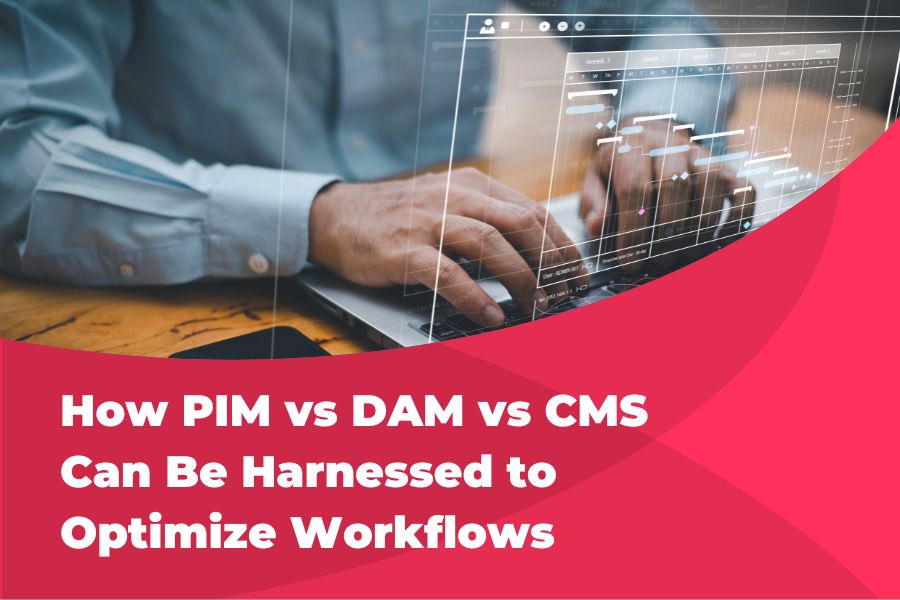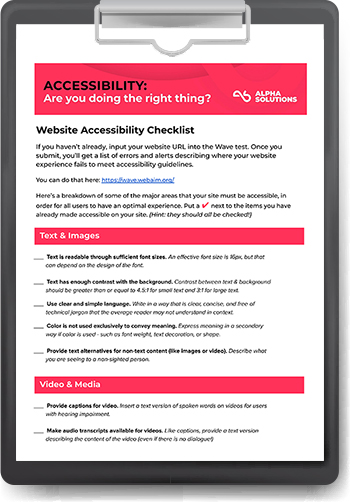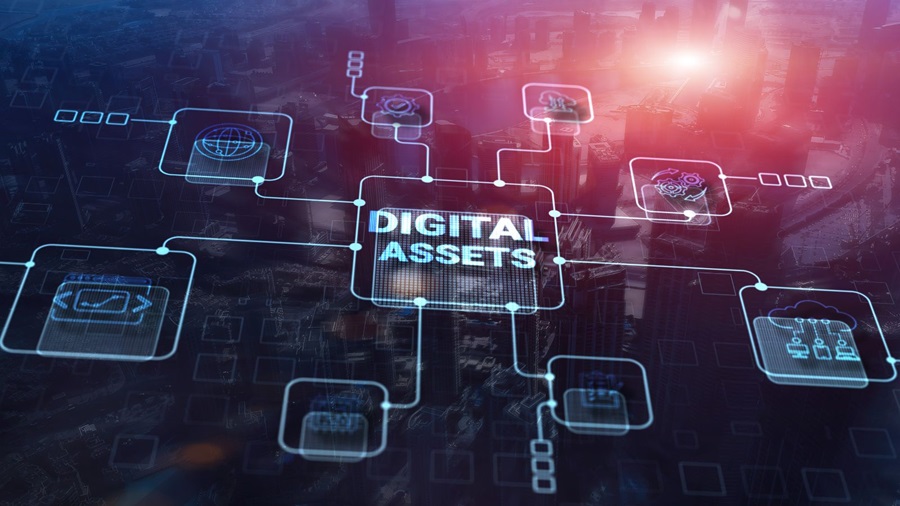In today’s digital world, Big Data is the new currency, and its proliferation is rapidly changing how businesses are set up and run. According to an IDC report, it’s estimated that the digital universe of data will grow 61% to 175 zettabytes by 2025.
In case you don’t recognize a zettabyte, that’s 1 gigabyte with 21 zeros behind it - or 3 trillion gigabytes!🤯
Based on this statistic alone, let’s appreciate that digital businesses, especially e-commerce businesses, demand the right technological solutions to contain and manage this volume of data.
Because you’re here with me, chances are you’re looking for the right solution to do just that - organize your digital content and better streamline your workflows. How proactive of you!
In that case, the acronyms PIM vs DAM vs CMS may look familiar. While these could seem like random letters strung together to sound fancy, they’re actually key software solutions used for managing various types of digital content, assets, and product information systems.
In this article, we’ll be comparing three digital content solutions, which are (you guessed it): PIM vs DAM vs CMS. By the end of this article, you’ll have a good understanding of how these systems will make your business processes more effective.
Let’s start with an overview of what each of the systems is and why they’re important.
What is Product Information Management (PIM)?
Our first digital content system to explore is called PIM, aka Product Information Management.
PIM is a system that helps manage all of the data needed to market and sell your products through distribution channels.
The PIM effectively stores and organizes all the information and media assets relating to your product, including:
-
SKUs,
-
basic product information, and
-
technical specs.
It’s important to note that a PIM system should never include any transactional data such as inventory or pricing information. These types of data are housed in an ERP system (that’s for another blog post), with PIM handling product information management only.
Product information management software can do several key things with your product’s data:
1. Collect & Consolidate - have all your product’s information in one place, from internal and external sources.
2. Manage - easily access, update, and enrich your product’s data to ensure consistency and accuracy.
3. Distribute & Connect - publish your product’s information and ensure it connects with every customer and colleague across sales channels, such as marketplaces, resellers, or e-commerce sites.
Here’s when having a PIM is a good idea:
✅ You are a large e-commerce business that handles a large amount of products.
✅ You have your products’ information all over the place and in different formats across various systems, and you feel like you’re losing track of it all.
✅ You have no clear way to see your products’ relationships and hierarchies.
✅ You find that your products’ data is not clean, consistent, or accurate.
✅ You have no easy way to send your product’s information to everyone who needs it.
|
How accessible is your website? Get our free accessibility checklist to guide your efforts for getting compliant and doing the right thing. Plus, receive real feedback from us to help you on your next steps. |
With the implementation of effective product information management, here are some of the key outcomes your business may experience:
🚀 Increased efficiency and productivity
The centralized source for all your product information means there’s no more wasted effort and resources scrambling to find the data you need.
⭐ Higher quality products
PIMs organize and streamline your products’ data, ensuring every piece of information is collected. This translates into a complete and accurate picture of your product.
😊 Happier customers
Having all of your products’ data at your fingertips shortens your customer wait times and gives them all the options right there and then when they need them.
💪🏼 Become more competitive
It’s just common sense that having the best, high-quality products decreases the chances of returns and increases your conversion rates.
According to a client of Inriver, a leading product information management software, they are ‘able to deliver information to customers 8X faster’ with a PIM in place.
How’s that for an improved customer experience?
Next up in the battle between PIM vs DAM vs CMS -
What is a Digital Asset Management system (DAM)?
While the PIM is a system focused on product data, a DAM or Digital Asset Management system harnesses all your digital media and creative content to ensure a cohesive brand identity.
Similarly to product information management, a DAM gives you the ability to organize, manage, and share all of your digital assets and their shared metadata, such as:
-
Images and photos of products, locations, and other related data
-
Video files for webinars or features
-
Audio files of podcasts and customer interviews
-
Brand guidelines such as logos and typography
-
Branded content
With Digital Asset Management, you and your stakeholders have the ability to:
1. Organize and find all of your digital assets in one centralized place from anywhere in the world.
2. Share and collaborate with internal/external teams to ensure cohesion and alignment.
3. Distribute assets across all your important platforms, such as social channels, web content management systems, marketing automation solutions, third-party distribution services, and more.
DAMs are need-specific and come in all shapes and sizes to accommodate various business types. For large e-commerce companies, a DAM is vital to store and effectively leverage all its brand imagery.
On the other hand, for small charitable organizations, a DAM is a good solution to simply organize internal digital information and share it between departments.
Even within specific functional departments, a DAM can be used in its own right, irrespective of wider company application. For example…
-
HR departments can use a DAM to manage employee records, benefit and payroll details, and more.
-
Sales and marketing teams can employ a DAM for brand management purposes.
-
Procurement teams can store vendor details such as contact details and invoicing information
Whatever the use case, the whys of having a DAM are well documented. The need for a DAM to be an essential component of your digital transformation strategy is highlighted by brands like Microsoft who use the Sitecore XP and Content Hub solutions.
According to Nicol Chadek, Director of Digital Marketing Operations at Microsoft, their DAM has enabled them to ‘develop a world-class platform that delivers high-quality, personalized and targeted content to millions of partners across the world.’
Indeed, a key benefit of implementing a DAM is leveraging the most appropriate content when you need it and reducing waste, because everything is accessible to you!
Other key benefits of digital asset management include:
📈 Consistent brand management
A DAM ensures high standards in your brand’s imagery and messaging, strengthening brand authority and generating higher business growth.
💰 Increased customer conversion and retention
You have the ability to customize your customer’s needs and focus on ensuring a smoother and faster journey along the buying cycle.
🏠 Improved risk reduction
All assets are housed and protected under one system, which increases the ability for effective oversight and decreases cases of content misuse.
Our final contender in the battle between PIM vs DAM vs CMS -
What is a Content Management System (CMS)?
A content management system, or CMS, isn’t centered on product information or digital assets like PIMs or DAMs but instead is entirely focused on websites. A CMS is a critical component of e-commerce infrastructure, and content management systems have been used on over 77 million websites, according to BuiltWith.
A CMS is specifically designed for developing a website without any technical knowledge or expertise.
Content management systems allow anyone to create and manage website content without a need for a programming degree; they simply handle all the coding for you!
As for the Why with the CMS, this is an easy one - every digital business needs a website!
There are many different content management systems on the market. Originally designed as blogging platforms, they now offer expansive capabilities, including web page design and document management.
All CMSs have the same core functionality and allow you to:
✅ Create, manage, modify, and publish content, including websites, in one user-friendly interface. They can shape and power various website types, such as:
-
e-commerce stores
-
Blogs
-
Membership sites
-
Online courses
✅ Customize the design and functionality of your website by simply using templates and extensions instead of having to code.
✅ Enhance collaboration by having multiple users from various teams simultaneously working in the back-end.
✅ Build in additional features and extensions to your site to enhance security or search engine optimization.
✅ Organize your content strategy through scheduling capabilities.
✅ Access your site and content virtually anywhere, using single dashboards or platforms.
Given there is such a vast array of CMS platforms out there, here’s a quick look at a few of the content management systems we recommend as enterprise solutions:
-
Sitecore XM Cloud
-
Sitecore Content Hub One
-
Sanity.io
-
Kontent.ai
-
Contentful
-
ContentStack
-
Crownpeak
How to Harness the Capabilities of PIM vs DAM vs CMS
Big Data is giving us opportunities we never thought possible and is allowing for smarter, more informed, and faster business decisions. The volume, speed, and variety of these expanding datasets, especially in the e-commerce world, demand the right technological solutions to manage it all.
Although PIM, DAM, and CMS systems each have their specific focus and areas of expertise, all are essential tools for businesses to organize, manage, and distribute digital information.
We’ve provided you with the What and the Why of each system, but let’s now turn our attention to the How - that is, how exactly can these systems be used to streamline and scale your business workflows?
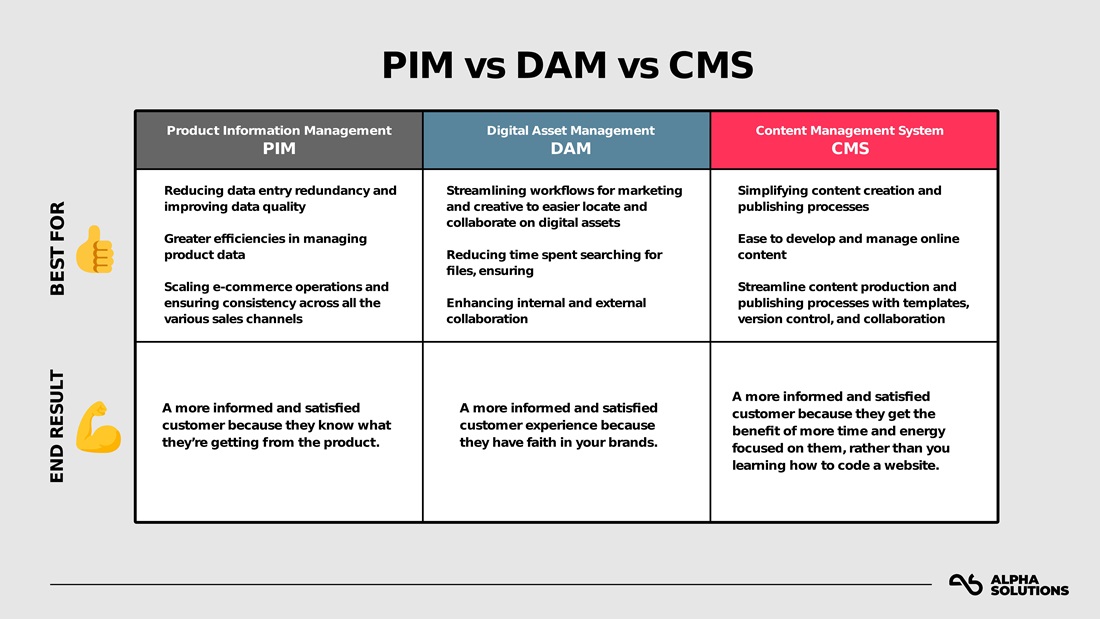
Product Information Management (PIM)
👍🏼 Best for:
Reducing data entry redundancy and improving data quality. This results in greater efficiencies in managing your products’ data, which is critical for scaling e-commerce operations and ensuring consistency across all the various sales channels.
💪🏼 End result:
A more informed and satisfied customer because they know what they’re getting from the product.
Digital Asset Management (DAM)
👍🏼 Best for:
Streamlining workflows for marketing and creative teams by making it easier to locate and collaborate on digital assets. This reduces countless hours spent searching for files, enhances internal and external collaboration, and ensures that the right assets are used in marketing campaigns.
💪🏼 End result:
A more informed and satisfied customer experience because they have faith in your brands.
Content Management Systems (CMS)
👍🏼 Best for:
Simplifying content creation and publishing processes, making it easier for lay users to develop and manage online content. Templates, version control, and collaboration features help streamline content production and publishing processes.
💪🏼 End result:
A more informed and satisfied customer because they get the benefit of more time and energy focused on them, rather than you learning how to code a website.
Of course, the choice of PIM vs DAM vs CMS depends on the specific needs of your business and the type of information you’re managing. Many organizations invest in only one of these systems.
However -
Businesses are now leveraging a combination of PIM, DAM, and CMS to better meet their diverse content and data management requirements.
Ways to Leverage PIM, DAM, and CMS Together
When implemented together, these systems can significantly streamline and strengthen your business processes in numerous ways:
1. Centralized Content Management
PIM and DAM systems centralize your product information and digital assets, reducing data silos.
➡️ This ensures all your stakeholders have access to the latest and most accurate content, promoting consistency across all channels.
2. Improved Data Quality and Accuracy
PIM and DAM systems enable your business to maintain accurate and up-to-date digital information about their products or brands.
➡️ This ensures your customers and employees receive consistent and reliable data, reducing errors and boosting customer trust.
3. Efficient Collaboration
DAM and PIM systems facilitate collaboration by allowing multiple teams, such as marketing, design, and sales, to work on the same assets and product data simultaneously.
➡️ This streamlines content creation and the approval processes.
4. Time and Cost Savings
PIM, DAM, and CMS systems automate various content-related tasks, such as data entry, file tagging, and distribution.
➡️ This reduces manual effort and minimizes the risk of errors, ultimately saving you time and resources.
5. Personalization and Targeting
CMS systems allow you to create and manage web content easily, tailoring it to your specific customer segments with personalized marketing.
➡️ When properly integrated with PIM and DAM systems, this ensures content is based on accurate product data and compelling visual assets.
6. Multichannel Publishing
PIM and DAM systems facilitate the management and distribution of content across multiple channels, such as e-commerce websites, mobile apps, social media, and print materials.
➡️ This simplifies the process of maintaining consistency across different touchpoints.
7. Analytics and Reporting
PIM, DAM, and CMS systems provide valuable insights into content and product performance when combined with proper analytic tools.
➡️ This will help guide your business to make better data-driven decisions and refine your strategies.
8. Regulatory Compliance
PIM and DAM systems assist in managing your product and digital asset information, ensuring compliance with industry-specific regulations and standards.
➡️ This reduces your risk of non-compliance and associated penalties.
9. Scalability
All systems adapt to the growing needs of your business, supporting an expanding product range and an increasing number of digital assets.
➡️ This ensures that the tools remain effective as the business evolves, maximizing your investment return.
In order to harness the full power of PIM vs DAM vs CMS in your business, you should consider integration between these systems. This can maximize seamless data flow and content consistency across your organization. Plus, increase your capacity to handle more data and ultimately satisfy more customers!
Let’s recap on the systems you learned about:
Product Information Management (PIM) - Helps manage all of your data needed to market and sell products through distribution channels.
Digital Asset Management (DAM) - Harnesses all your digital media and creative content to ensure a cohesive brand identity.
Content Management System (CMS) - Allows you to create, manage, and publish content on your website and customize the user experience.
Which solutions does your business rely on - PIM, DAM, CMS - or a combination?
If you’re wondering how to make the most of integrating all these powerful systems to streamline workflow and increase scalability, Alpha Solutions will help you make the best strategic choice based on your business objectives.
Contact us to chat about your implementation needs today.


